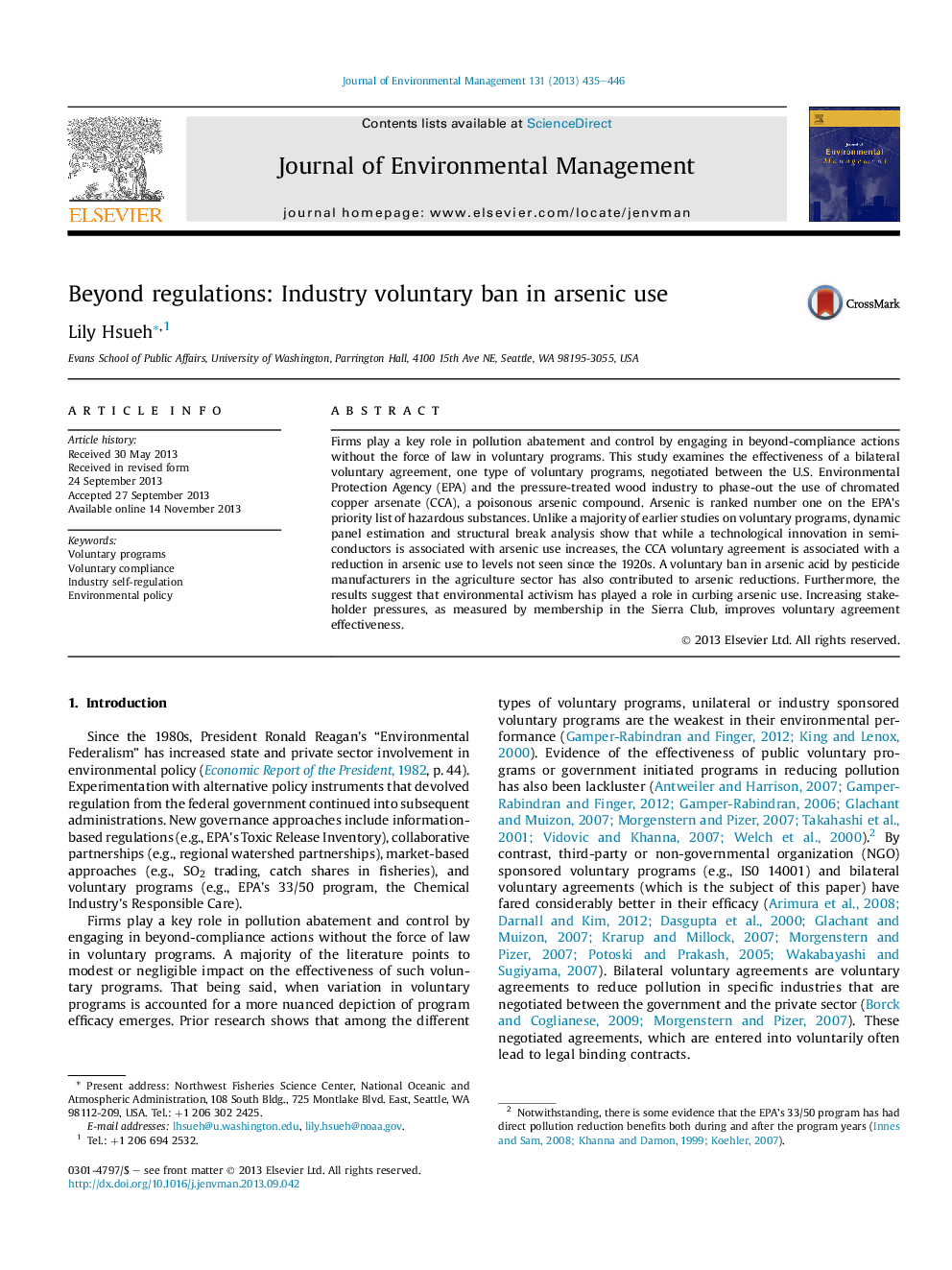| Article ID | Journal | Published Year | Pages | File Type |
|---|---|---|---|---|
| 1055971 | Journal of Environmental Management | 2013 | 12 Pages |
•Effectiveness of an industry voluntary agreement to curb arsenic use is examined.•The voluntary ban is associated with arsenic use reductions back to 1920 levels.•Another industry voluntary ban in agriculture contributed to reduced arsenic use.•An innovation in semiconductors is associated with arsenic use increases.•Increasing stakeholder pressures improves voluntary agreement effectiveness.
Firms play a key role in pollution abatement and control by engaging in beyond-compliance actions without the force of law in voluntary programs. This study examines the effectiveness of a bilateral voluntary agreement, one type of voluntary programs, negotiated between the U.S. Environmental Protection Agency (EPA) and the pressure-treated wood industry to phase-out the use of chromated copper arsenate (CCA), a poisonous arsenic compound. Arsenic is ranked number one on the EPA's priority list of hazardous substances. Unlike a majority of earlier studies on voluntary programs, dynamic panel estimation and structural break analysis show that while a technological innovation in semiconductors is associated with arsenic use increases, the CCA voluntary agreement is associated with a reduction in arsenic use to levels not seen since the 1920s. A voluntary ban in arsenic acid by pesticide manufacturers in the agriculture sector has also contributed to arsenic reductions. Furthermore, the results suggest that environmental activism has played a role in curbing arsenic use. Increasing stakeholder pressures, as measured by membership in the Sierra Club, improves voluntary agreement effectiveness.
